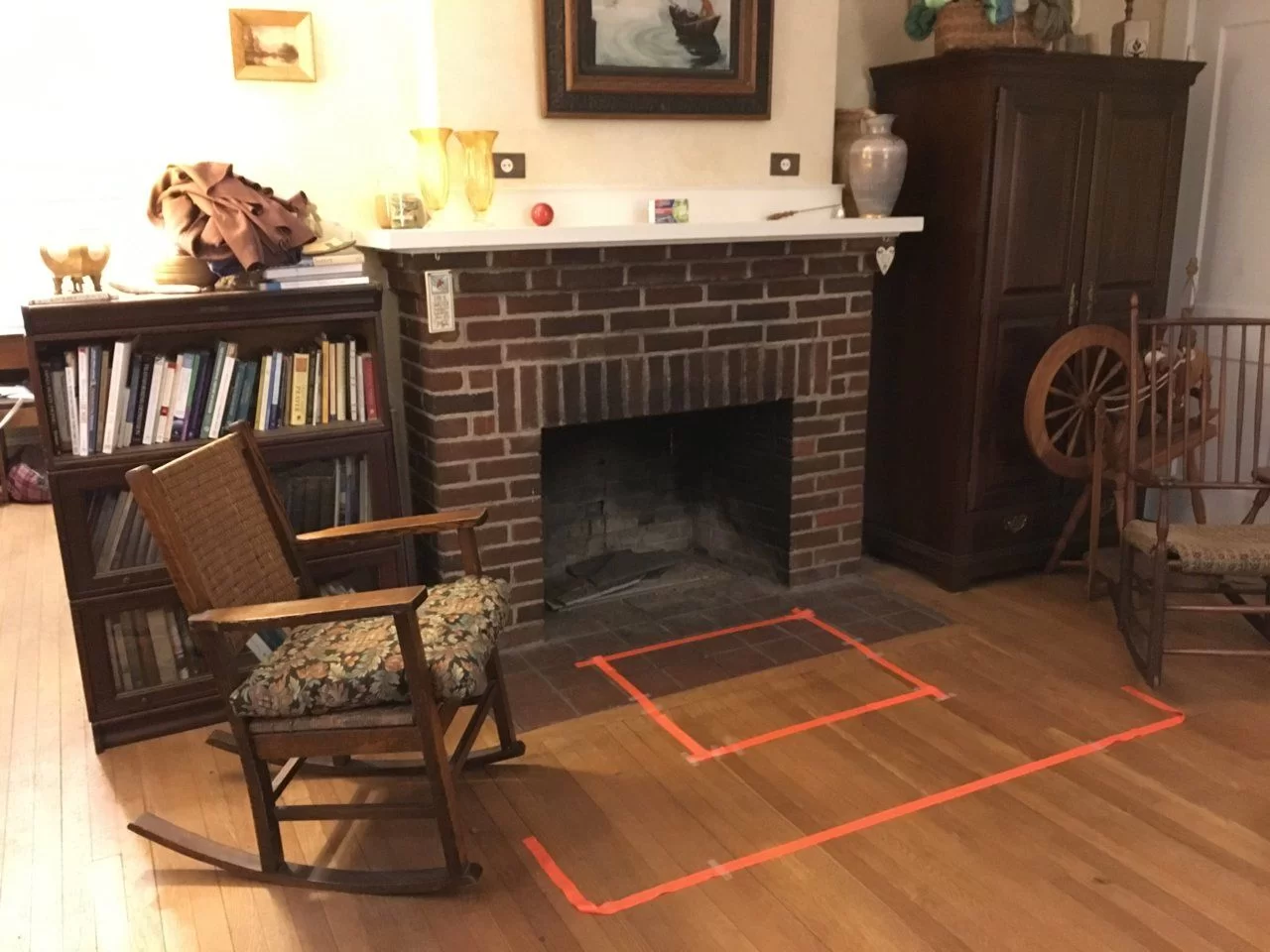I hope I am over-thinking this....but I'm afraid I'm not. If anyone could provide some feedback and suggestions about the safety of using plastic-coated fiberglass mesh behind stone veneer, I'd greatly appreciate it.
After several years of refining our plans, we finally got our fireplace to wood stove conversion underway. The chimney guys put a new liner in our old fireplace chimney. We removed the old wood mantle and built a new wall with metal studs and cement board. We also raised all our floors with plywood, duroc, and micore so the hearth would be flush.
We've gone from this...
to this.....
![[Hearth.com] Stone Veneer Clearances [Hearth.com] Stone Veneer Clearances](https://www.hearth.com/talk/data/attachments/235/235229-423e3f522e7967b9a021756585840088.jpg?hash=DfvRzOEgO1)
When the tile company put down our travertine floor tiles, we realized they used permanent plastic levelers under the tiles in the hearth area. So we had them remove the tiles and reset them without the plastic discs. We had already made sure that the mastic was thinnest, and that
neither the duroc nor mastic had combustible fillers.
So far so good. Right? We are almost there. The mover is coming tomorrow to install the stove. But, now I'm not so sure.
Yesterday, when my husband and I were looking at the stove to pipe connection, I realized that the chimney pipe was awfully close to the stacked stone veneer. We knew the tiler hadn't removed the plastic mesh when installing the stacked stone. (Although we had told him everything had to be non-combustible.) But we figured it would be OK, because we will have a rear-heat shield on the stove and the required 6" clearance. But we hadn't taken into account the pipe! Ugh

!
I'm so upset. I'm afraid we may need to remove the stone veneer and re-bed new ones after removing the plastic mesh.
Here's what it looks like at the pipe.
There's about a 1-2 airspace above the pipe, then a horizontal stone tile with no plastic. Above the horizontal tile is the cement board wall with the stone veneer. The plastic mesh is sealed between the cement board and tile in thinnest. We planned to put grout between the stacked stone cracks.
![[Hearth.com] Stone Veneer Clearances [Hearth.com] Stone Veneer Clearances](https://www.hearth.com/talk/data/attachments/235/235234-637a1084f8eb3fa540bdd933c4e165e6.jpg?hash=WIt_zfSWjO)
The decorative ring still needs to be cut across the top. Then the metal will get pushed back, so it's reset into the opening. I was also planning on painting all the metal with a high-temp paint that matches the stove.
Sorry this is so long. I'm just really worried. What would you do if it were your installation?
Thanks!


![[Hearth.com] Stone Veneer Clearances](/talk/data/attachments/182/182870-4fa3a6a779d77a5d1fec2c4be598dc18.jpg?hash=kSBr2Uc3rL)
![[Hearth.com] Stone Veneer Clearances](/talk/data/attachments/182/182871-2e9c37cf52b7c81254de1f802964b639.jpg?hash=4ZYNQiZcmx)
![[Hearth.com] Stone Veneer Clearances](/talk/data/attachments/182/182873-7bf92bfdacf11d4712c77e530217f0f6.jpg?hash=wGNi1zCOMz)
![[Hearth.com] Stone Veneer Clearances](/talk/data/attachments/182/182966-b7946075e7909826a475f4730e0017c0.jpg?hash=3fb5iMSgKu)

![[Hearth.com] Stone Veneer Clearances [Hearth.com] Stone Veneer Clearances](https://www.hearth.com/talk/data/attachments/235/235229-423e3f522e7967b9a021756585840088.jpg?hash=DfvRzOEgO1)
 !
!![[Hearth.com] Stone Veneer Clearances [Hearth.com] Stone Veneer Clearances](https://www.hearth.com/talk/data/attachments/235/235234-637a1084f8eb3fa540bdd933c4e165e6.jpg?hash=WIt_zfSWjO)